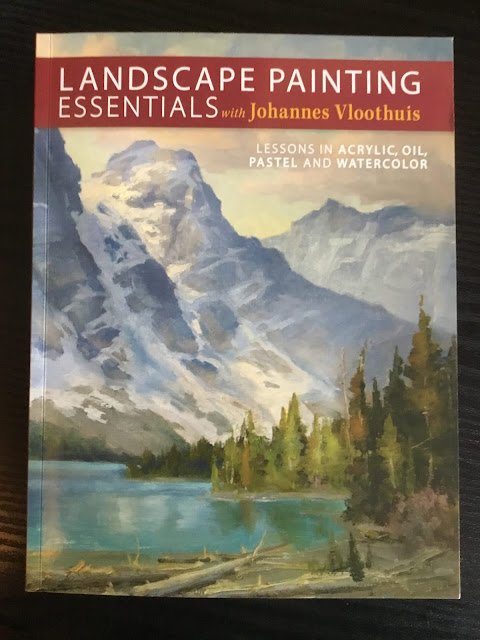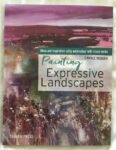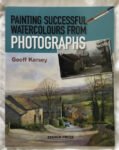On the face of it, this is a very similar book to the Jane…

Landscape Painting Essentials, Johannes Vloothuis: Book Review
I’ve had my eye on this book for a while, so ordered it as soon as I’d opened all my presents and the Christmas Amazon furlough was over. It’s a 144 page paperback.
If the first you’ve ever seen of this book is the cover, then you’ll know it’s about landscapes. Maybe you expect to look at the contents and see chapters on trees, water, rocks, buildings, etc. Or maybe chapters on each season of the year. Sorry. That’s not what this book does. If you want to know about painting water, check out the Ron Hazell book, otherwise you’re looking at Terry Harrison for trees and rocks or something on urban sketching for buildings.
<Brief aside here: if anyone writes something on painting trees in watercolour that’s at the same level as the Ron Hazell book is for water, then they’re onto a winner.>
Anyway, this isn’t that sort of landscape book. It’s more about composition. I read and reviewed Frank Webb’s book on dynamic composition in the summer. It had chapters on things like line, colour, space, size and value with a big emphasis on how these things needed to be consistent but not too consistent. Lots the same but some different. Like the Boltzmann distribution in statistical mechanics. But this book isn’t like Frank’s either.
This one has more in common with the Ian Roberts book on composition but it’s landscape focused (whereas Ian likes still lifes a bit too much for my tastes) and just a bit more readable, focused and applicable. This book covers things like what the eye sees, abstract shapes, colours, simplification, avoiding clones, avoiding boring lines, making architecture more interesting, cropping photos, how to create a path into a painting. There’s a lot of information in there for such a short book.
Instructionally, the book is more about making the point through examples than about long paragraphs of text. There are lots of examples of Johannes’ paintings that illustrate his points. Not in a monotonous, repetitive way either, but in lots of different ways. There are also a lot of places where he draws arrows over paintings or draws a simplified version of the painting next to it to help make his point. In other words he gets it all across in an easily understandable way.
The worst bits about the book are the “demonstrations” at the end of each chapter. The inverted commas are there for a reason: these a not descriptions of how Johannes put paintings together but a series of instructions on how you can copy him and anybody that’s been following my reviews will know that these step by step instructions get my hackles up. But it’s even worse than that. These instructions might as well be in a different book as, although there’s something in them that reflects the lessons from that chapter, Johannes doesn’t make any attempt to emphasise this aspect of the demos. The word simplify, for example, only appears twice in the demo at the end of the chapter on simplification, and then only really in passing. It’s as if Johannes has been given some really bad advice on needing to include step by step instructions in what’s actually a book aimed at serious, experienced artists. A 117-page version of this book without those seven demonstrations would be no less valuable but might look a bit thin.
The cover of the book mentions “lessons in acrylic, oil, pastel and watercolour”. This put me off the book for a while but, after reading it, I don’t think I’m losing out by only using one of those four media. Some of the demonstrations will use acrylic, oil or pastel but, as I’ve already mentioned, there was no value to me even in the watercolour demos. So no big deal. And apart from that, the only place I can remember something of no use to me was in half a page towards the end that talked about how you could convey depth by choosing how thick to lay on the oils. Apart from that, everything seemed to apply to watercolour.
This seems like quite a unique book to me, very different to any landscape or composition book that I’ve seen anywhere else and its uniqueness makes indispensable and easily worth five palettes. I think it actually makes a dream team when combined with the Frank Webb book on Dynamic Composition: two books on composition that approach it from two different directions, one general and one landscape.
🎨🎨🎨🎨🎨
You can find this book and more reviews of it at Amazon UK here. As an Amazon Associate, I earn commission from qualifying purchases but this costs absolutely nothing extra to you.








Leave a Reply